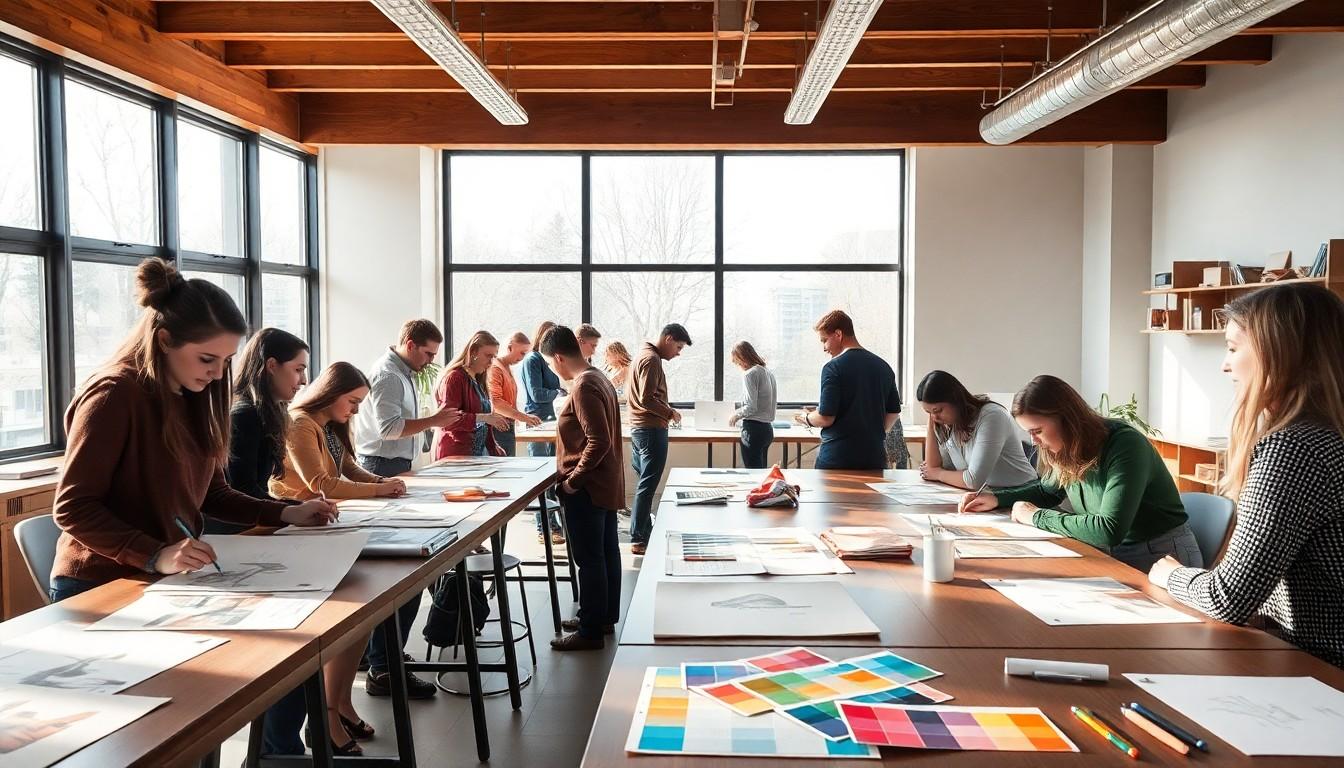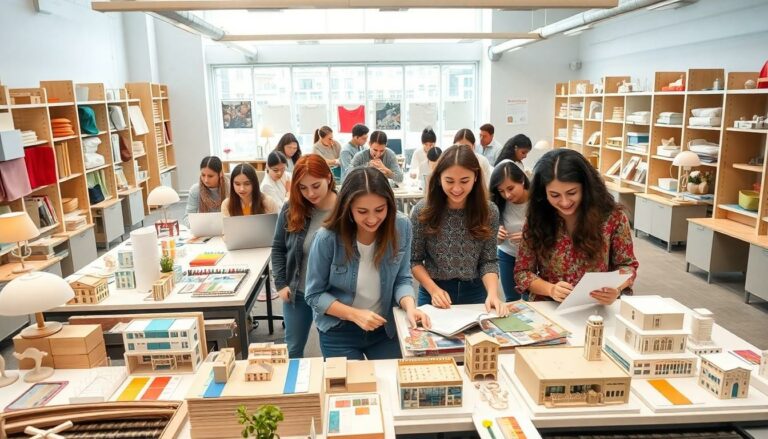Thinking about diving into the stylish world of interior design? It’s an exciting journey full of color palettes, furniture layouts, and maybe even a few dramatic “What were they thinking?” moments. But before you start rearranging your living room like a pro, you might wonder—how long does it take to become an interior designer?
Overview of Interior Design Programs
Interior design programs offer various paths toward a career in this creative field. Educational options typically include associate, bachelor’s, and master’s degrees, each serving distinct objectives.
Types of Interior Design Degrees
Associate degrees provide foundational knowledge, often taking two years to complete. Graduates gain essential skills and can enter entry-level positions. Bachelor’s degrees require four years and delve deeper into design theory, history, and applications. A master’s degree often necessitates an additional two years, focusing on advanced topics like sustainable design and project management.
Key Components of the Curriculum
Curricula generally comprise several critical components. Design fundamentals teach students about space planning and color theory. Technical skills include computer-aided design (CAD) software training. History courses cover significant movements and influential designers. Business practices equip students with budgeting, marketing, and client management strategies. Sustainability classes emphasize eco-friendly materials and practices, ensuring graduates are prepared for modern industry demands.
How Long Is Interior Design School


The length of time required for interior design school varies by program type.
Associate Degree Programs
Typically, associate degree programs span two years. Students gain foundational knowledge through coursework in design principles, color theory, and drafting techniques. Many institutions offer hands-on projects that enhance practical skills. Graduates often qualify for entry-level positions, providing a springboard into the industry.
Bachelor Degree Programs
Bachelor degree programs usually last four years. In these programs, students explore advanced design concepts, historical contexts, and design technology. Coursework often includes subjects like space planning and sustainable design practices. Graduates emerge ready for roles as professional interior designers, equipped with a comprehensive skill set.
Master Degree Programs
On average, master degree programs require an additional two years of study. These programs delve into advanced topics such as project management, research methodologies, and specialized design areas. Students often engage in in-depth design projects, enhancing both creative and analytical skills. Completing a master’s degree can lead to higher-level positions and specialized career paths within the field.
Factors Influencing Program Length
Various elements affect the duration of interior design programs. Factors include the type of study model and learning environment students choose.
Full-Time vs. Part-Time Study
Full-time study typically leads to quicker program completion. Students enrolled in full-time courses complete associate degrees in two years, bachelor’s degrees in four years, and master’s degrees in two additional years. Part-time study extends these timelines. Students balancing work and study often take longer, spreading coursework over multiple semesters. Flexibility attracts many to part-time programs but might delay graduation and job entry.
Online vs. Traditional Learning Environments
Learning environment shapes program length as well. Online programs offer flexibility, allowing students to progress at their own pace. Some students might finish degrees faster due to self-paced courses. Traditional classrooms offer structured schedules, encouraging timely completion. However, the immersive experience and hands-on projects in traditional settings can sometimes enhance learning, possibly affecting the length of study. Each environment suits distinct learning preferences, influencing overall duration in the field of interior design.
Career Pathways After Interior Design School
Interior design graduates find diverse career opportunities in various sectors. Entry into the field often begins with practical experience through internships or entry-level roles.
Entry-Level Positions
Entry-level positions in interior design typically include roles such as design assistants, junior designers, and space planners. Design assistants support senior designers in research and project development while learning essential skills. Junior designers take on specific project tasks, contributing to design layouts and color schemes. Space planners focus on optimizing layouts within a given area, ensuring functionality and aesthetics blend seamlessly. These roles usually require a degree in interior design, with on-the-job training enhancing practical skills. Networking and gaining experience through internships significantly improve chances of landing a position.
Advanced Career Opportunities
Advanced career opportunities arise with experience and further education. Senior designers manage projects and lead teams, ensuring client visions materialize. Project managers oversee timelines and budgets, collaborating with contractors and stakeholders. Specialized roles also exist, such as sustainable design consultants or interior design educators. Being certified by organizations like the National Council for Interior Design Qualification (NCIDQ) can elevate credibility and job prospects. Pursuing a master’s degree or obtaining professional certifications enables graduates to stand out in this competitive field.
Diverse Career Opportunities
Embarking on a journey in interior design involves a significant investment of time and effort. With various educational pathways available, aspiring designers can choose programs that align with their career goals. Whether pursuing an associate degree for foundational skills or a master’s degree for advanced knowledge, each option offers unique benefits.
As they navigate their studies, students will gain essential skills that prepare them for a dynamic industry. The flexibility of online learning or the structure of traditional classrooms further enhances their educational experience. Ultimately, the time spent in school not only shapes their design expertise but also opens doors to diverse career opportunities in this creative field.





